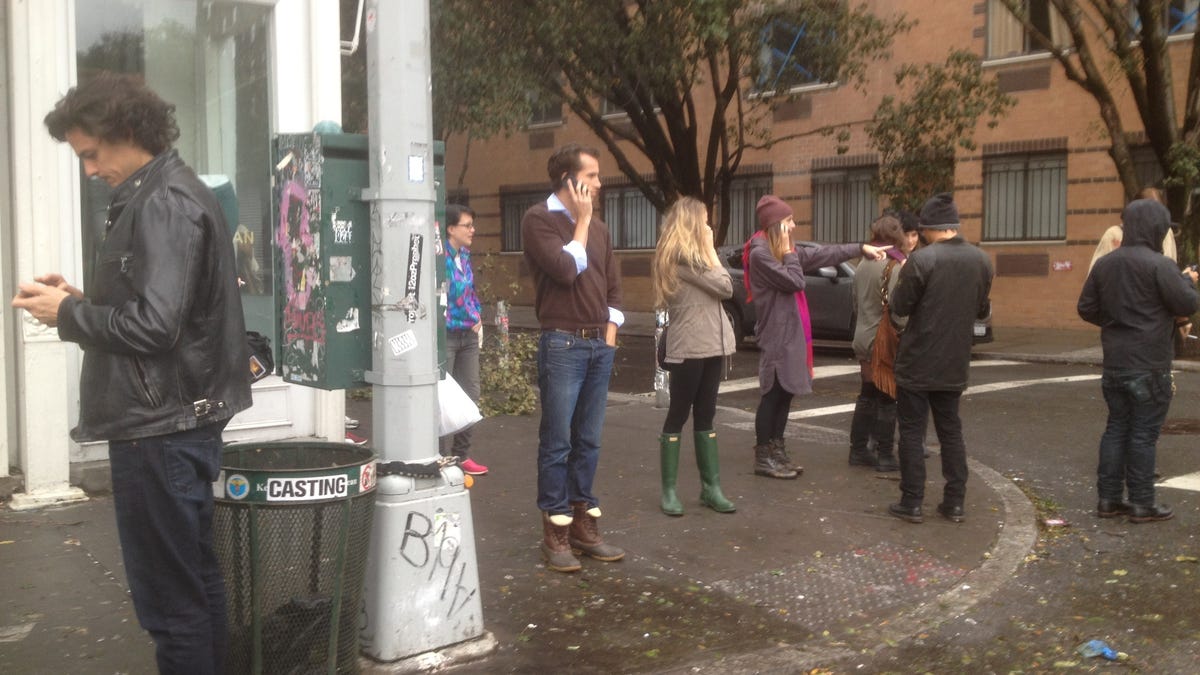With lights back on, cell service returns for many Sandy victims
Wireless phone service is quickly winking back on for millions of people after commercial power companies restore electricity to thousands of customers in hard-hit areas after superstorm Sandy.

The power is back on for some lucky people in regions devastated by superstorm Sandy. And that also means cell-phone service has returned.
As of Saturday morning, Con Edison, the power company providing service in New York City, reported that it had restored power to more than 645,000 customers, or approximately 70 percent of all those who lost power since Sandy slammed through New York. Power restoration to a large part of New York City also means wireless phone service that relies on this commercial power could also get back up and running.
On Saturday morning, AT&T reported that 96.5 percent of its cell sites are back in action across the region affected by Sandy. More than 90 percent of the company's cell sites across New York City, including in Manhattan, are operating.
"We expect to make continued good progress as power and other infrastructure issues are resolved," said AT&T spokesman Mark Siegel.
Ahead of power restoration on Friday, T-Mobile said it had deployed temporary cell sites atop the company's major switching facility in Tribeca, a neighborhood in downtown Manhattan.
And where power is restored, the company said, its service has returned, including the East Village, the Lower East Side, Chelsea, and around the World Financial Center.
"The size, scope, and impact of hurricane Sandy are unprecedented in the U.S. in terms of geographic area, location, and population density," the company said in a statement. "Ahead of the storm, T-Mobile's rapid response engineering teams staged equipment in and nearby the areas most severely impacted by storm, such as lower Manhattan, Staten Island, Long Island, and coastal and Northern New Jersey, and we are continuing to work around the clock to restore service."
As of Friday, Sprint also said that it had restored service to 80 percent of its network in New York, New Jersey, and Connecticut. In New York City, the company said that at least 75 percent of the network was operational as of Friday. But Sprint noted that some challenges remained in areas where power was still out and where back-haul connections were damaged.
Verizon said earlier in the week that 96 percent of its cell sites were operational and that there were no major issues for its wireless customers in the hardest-hit areas. But the company noted that some of its wired infrastructure had gone down after the storm because of commercial power failures and flooding in some facilities.
The company said on Friday that a switching facility in lower Manhattan and one on Long Island, including the company's headquarters and major communications hub at 140 West St., have been restored but are operating on backup power. These facilities provide phone, Internet, and TV services for consumers and small businesses in the area. This center also provides services for business and government customers. Now that commercial service is restored in that area, those switching sites should be working without backup power.
Verizon said its wired infrastructure will be fully restored in many areas within a few days. But the company acknowledged that some of the hardest-hit areas may not have wireline service, which includes phone and Internet service, for as long as two weeks.
Much of this service restoration is also dependent on getting commercial power restored, the company said.
Getting the lights on is a huge first step for all the phone companies. For days, millions of customers were without cell-phone and wireless data service.

